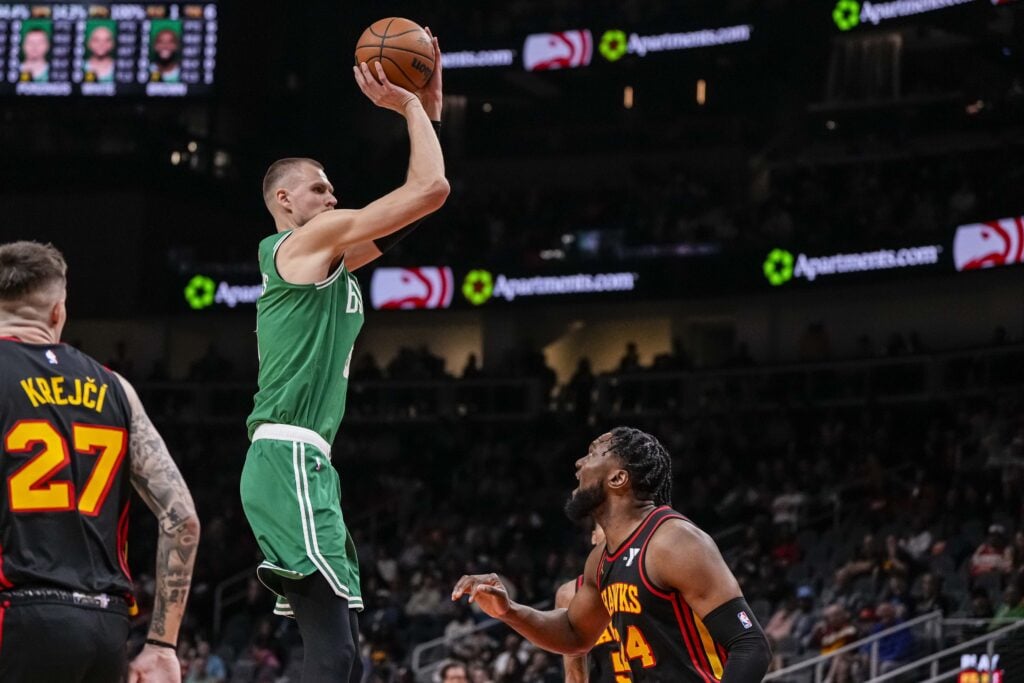The Boston Celtics came into the offseason with a clear goal to get under the dreaded second apron. One day before the NBA Draft, that goal was accomplished after trading Jrue Holiday and Kristaps Porziņģis. Holiday was shipped to the Portland Trail Blazers for Anfernee Simons and two second-round picks. Porziņģis, along with a second-round pick, was traded to the Atlanta Hawks in a three-team deal where the Celtics landed Georges Niang and a second-round pick, the Brooklyn Nets got the No. 22 pick and Terance Mann. While the return wasn’t insane, the Celtics are now $4.5 million under the second apron, and Niang is a quality role player, making this a good trade for Boston.
BREAKING: Boston, Atlanta and Brooklyn are finalizing a three-team trade that sends Kristaps Porzingis and a second-round pick to the Hawks, Terance Mann and Atlanta’s No. 22 pick to the Nets, and Georges Niang and a second-rounder to the Celtics. pic.twitter.com/1fcbIslyVF
— Shams Charania (@ShamsCharania) June 24, 2025
https://platform.twitter.com/widgets.js
Kristaps Porziņģis Trade Comes With an Obvious Benefit for the Celtics

Second Apron Penalties
The second tax apron comes with severe penalties. This includes teams only being able to sign free agents to veteran minimum contracts, the inability to aggregate salaries in trades, conduct sign-and-trade deals, trade first-round picks seven years out, use trade exceptions created from a prior year, or use cash in trades. Furthermore, if a team remains in the second apron for three out of five seasons, their first-round pick will automatically move to the end of the round.
Overall, remaining in the second-apron significantly hampers your flexibility, especially if you are in it for multiple years. As a result, the Celtics needed to get under the second apron, especially given Jayson Tatum‘s injury. On top of these penalties, tax payments skyrocket when you are a second-apron team. With the Porziņģis and Holiday deals, Boston saved $180 million in tax payments and $27 million in net savings.
Porziņģis’ Value Was at an All-Time Low
Porziņģis’ value was expected to be low, so it’s not surprising the Celtics didn’t get much in return for him. Still, Niang is a solid rotational wing with the ability to space the floor. Porziņģis is on an expiring $30.7 million contract and has significant health concerns. He only played 42 games this past season and has only played more than 65 games twice in his career. During the playoffs, Porziņģis was battling a mysterious illness and looked like a shell of himself. He averaged just 7.7 points and 4.6 rebounds on 31.6 shooting from the field.
Considering these factors, it shouldn’t be surprising that the Celtics didn’t get a ton of value for him. For the Hawks, it’s an intriguing gamble on an All-Star-level talent. Regardless, as stated before, getting under the second-apron makes this trade a clear win for Boston, and there’s no guarantee the 29-year-old big man will return to his best form.
The Last Word
With Tatum’s injury, Holiday, and Porziņģis being traded, the Celtics will look very different next year. While this trade doesn’t help them add significant talent like the Holiday-Simons deal, the financial benefits are clear, and Niang’s shooting makes him a solid fit in the Celtics system. Getting under the second apron could help the Celtics re-sign Al Horford and/or Luke Kornet. Boston could also look to draft a center at pick 28. The Celtics may trade Sam Hauser in a salary dump trade as their last financially based move. Ultimately, while Celtics fans may be disappointed by the return for Porziņģis, it was a trade that needed to be made for financial reasons.
Featured image: © John Jones-Imagn Images
The post Kristaps Porziņģis Trade Comes With an Obvious Benefit for the Celtics appeared first on Last Word On Basketball.